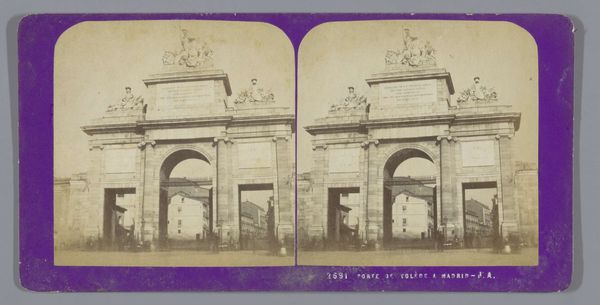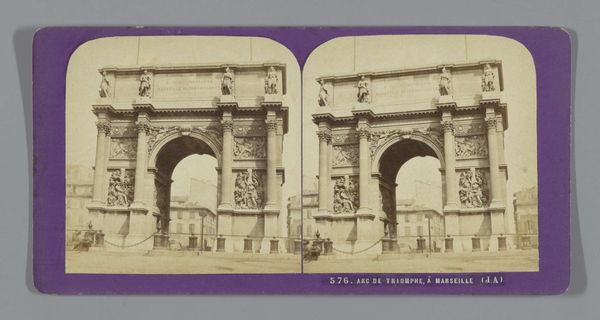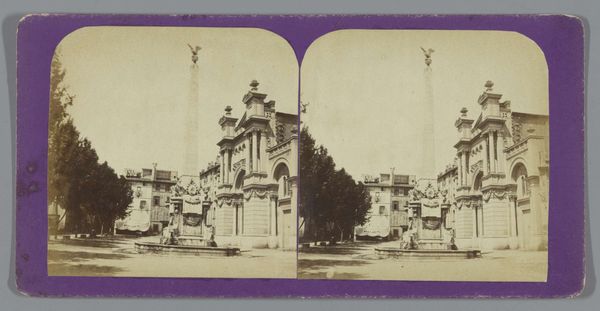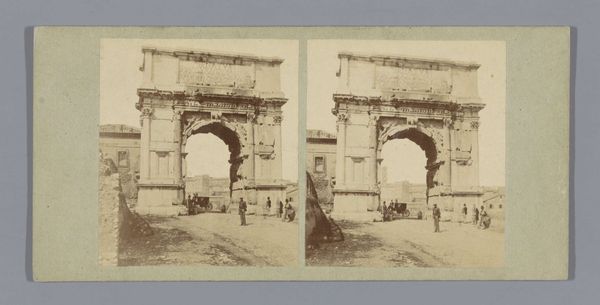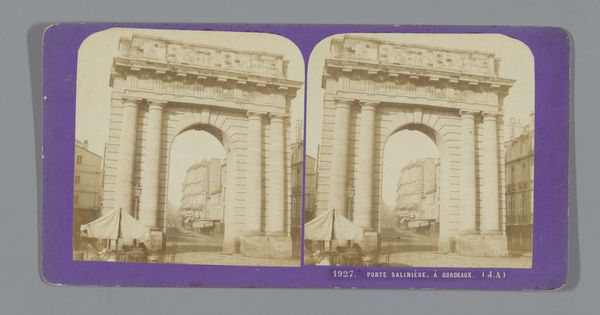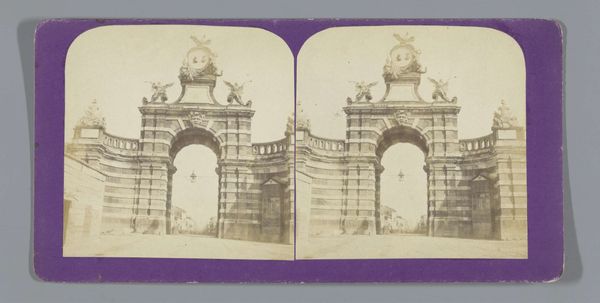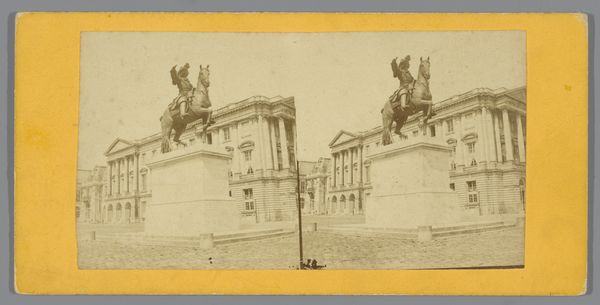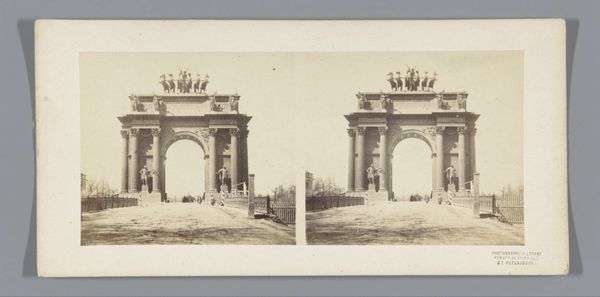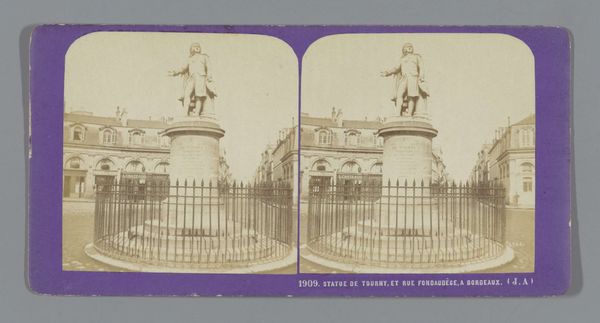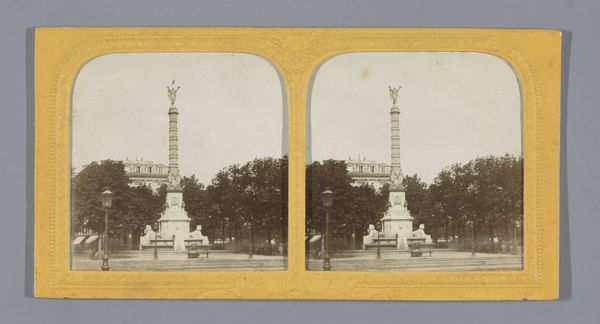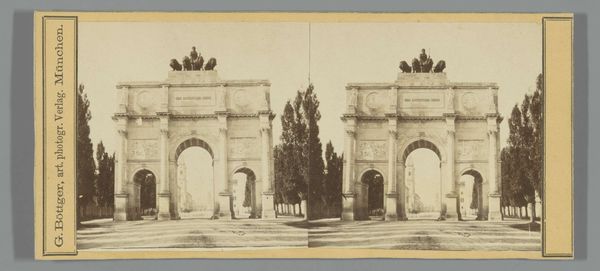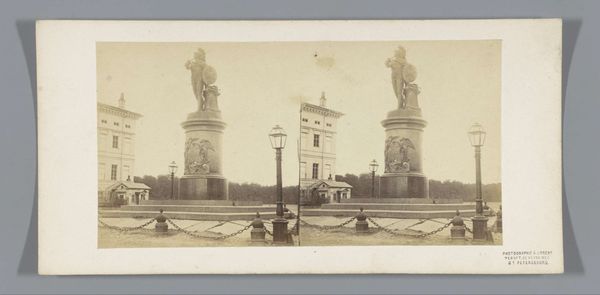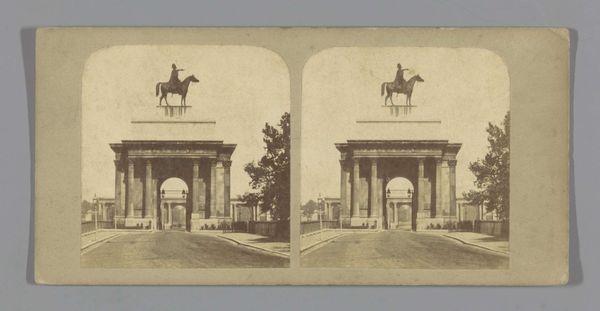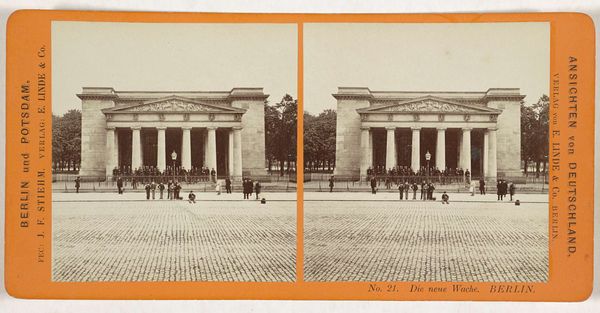
#
natural stone pattern
#
aged paper
#
toned paper
#
homemade paper
#
paper non-digital material
#
coloured pencil
#
arch
#
folded paper
#
watercolour illustration
#
paper medium
#
watercolor
Dimensions: height 85 mm, width 170 mm
Copyright: Rijks Museum: Open Domain
This stereograph, Porta Sempione te Milaan, was created by AJ in Paris. It’s a reproduction of a stone monument, printed on paper and mounted on cardstock. What's fascinating here is the layering of reproductive processes. The original stone architecture required quarrying, carving, and building. Then a photograph, itself a chemical and mechanical process, captured the scene. Finally, that image was printed, mounted, and mass-produced for distribution. The stereograph format was incredibly popular in the 19th century. It allowed people to experience a sense of depth and realism from faraway places, like Milan, without ever leaving home. It brought the world to you, mediated by technology, and available as a cheap commodity. This speaks volumes about the rise of consumer culture and the changing relationship between travel, image, and experience. Considering the labour and resources embedded in each stage of its creation, we can start to understand the complex social and economic forces that shaped this seemingly simple image.
Comments
No comments
Be the first to comment and join the conversation on the ultimate creative platform.
